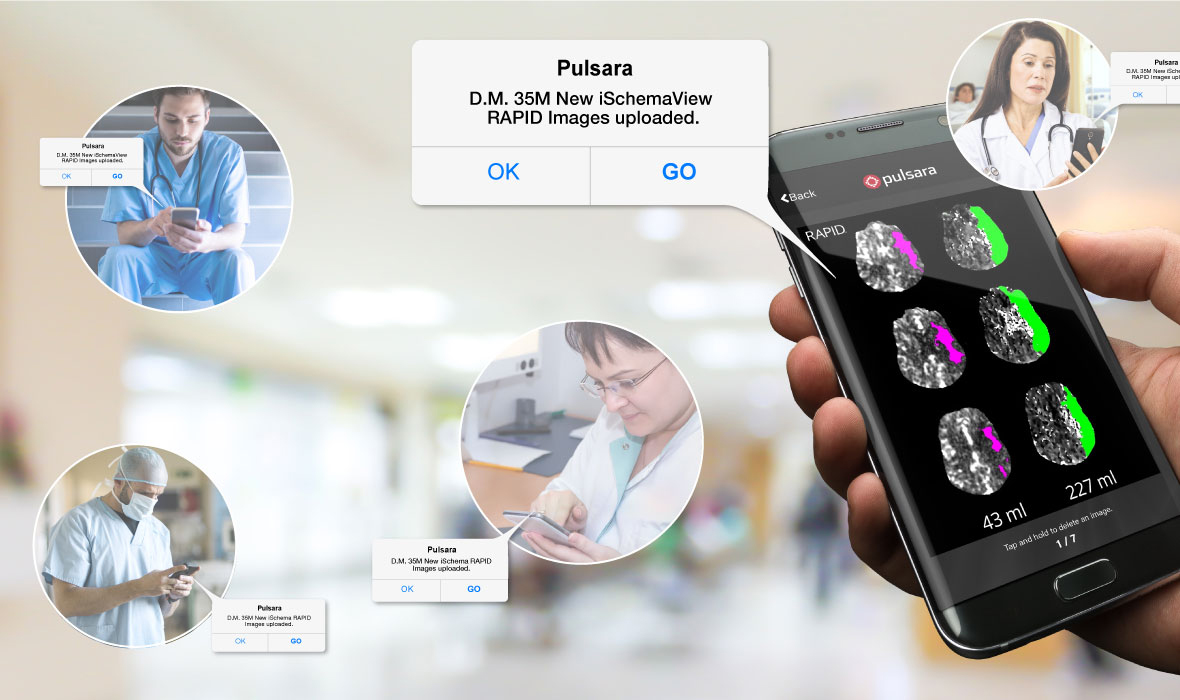Improving quality of care and outcomes for stroke patients goes beyond the decision to give tPA. It's about communication and coordination among ALL members of the care team to save time when even seconds matter. Here are seven tips to improve quality of care for stroke patients.
- Involve EMS in your Code Stroke process.
It’s simply essential. Too many hospitals choose not to allow EMS to activate a stroke prior to arrival. This mindset wastes time that the hospital could have been using to pre-register the patient and activate the cath lab.
- Optimize the transport time.
The medics must obtain a thorough history and begin preparations for tPA. Today's most successful systems use telemedicine technology for real-time video consultation with the hospital team members while still en route.
- Notify the ENTIRE team at once.
Even those systems that follow tip number 1 and regularly allow pre-notification often have room to improve -- it's imperative that the pre-notification results in all team members involved in the patient's care being brought together on the same page, and that steps are immediately taken to reduce time-to-treatment. While the ability to build and change the care team on your communication platform should be dynamic on a case-by-case basis, below is a list of those who should typically be notified as soon as the stroke is called in:
- Lab
- Neurology
- Stroke Coordinator
- Pharmacy
- House Supervisor
- Transportation
- Registration
- Have EMS bypass the ED, going straight to CT.
With some advanced warning, CT can have the table cleared so the patient can move directly from the EMS stretcher to the CT table without stopping at the front door for registration. Instead, registration can meet the patient in radiology. (NOTE: If your protocol mandates the patient stop in the ED, putting the patient on a portable monitor will save a couple of minutes when you leave for CT).
- Perform the rapid neuro assessment in the CT suite.
We all know that the time-limiting step is CT, making it important to minimize other steps before the CT as much as possible. Remember, a more detailed assessment can happen after the CT is complete.
- Once the CT is complete, divide and concur.
If the neurologist is there, the ED physician can split off and start talking with the family to gather crucial pieces of information including:
- Last seen normal
- Medical history
- Inclusion/exclusion for tPA
- If the patient must be transferred, real-time communication is everything.
Endovascular Today stated that "Historically, interfacility transfers for ELVO have been inefficient and have resulted in a substantial percentage of futile transfers." BUT, they indicated that "It is possible to develop a more streamlined transfer process for thrombectomy. One such successful protocol focuses on three key elements:
(1) early vessel imaging at the initial hospital;
(2) Health Insurance Portability and Accountability Act (HIPAA)–compliant, cloud-based imaging sharing with the stroke team at the receiving facility; and
(3) mobilization of transport resources prior to confirming an ELVO."
Whatever communication technologies your team uses to coordinate care for ELVO stroke, ensure that they instantly connect ALL players -- from EMS to various departments at your hospital to key players at facilities outside of your hospital -- in one place where everyone can see all the imaging, data, patient information, and case progression. (See how Pulsara's stroke app could support your teams here).

Did you know Pulsara integrates with iSchemaView RAPID to allow real-time sharing of RAPID images including CTP, MRI and CTA? Learn more here.
 Team Pulsara
:
Aug 05, 2019
Team Pulsara
:
Aug 05, 2019



![[PRESS RELEASE] Published Research Finds Up to 31% Faster STEMI Treatment Times in Rural Hospital Setting with Pulsara](https://www.pulsara.com/hubfs/_1_website-page-blog-assets/pulsara-hosp-teams-assign-cardio-stemi-rn-1200x701.jpg)